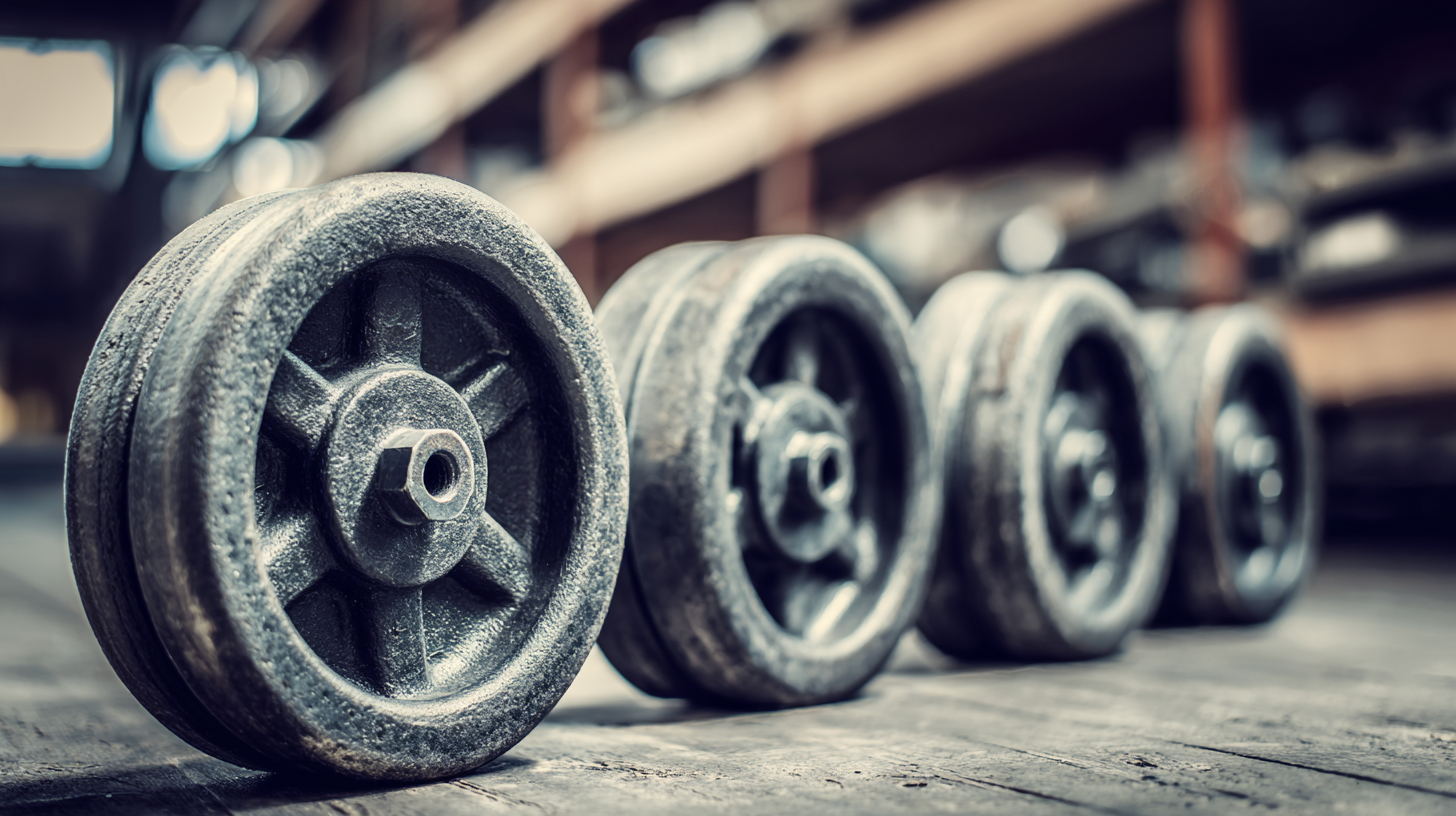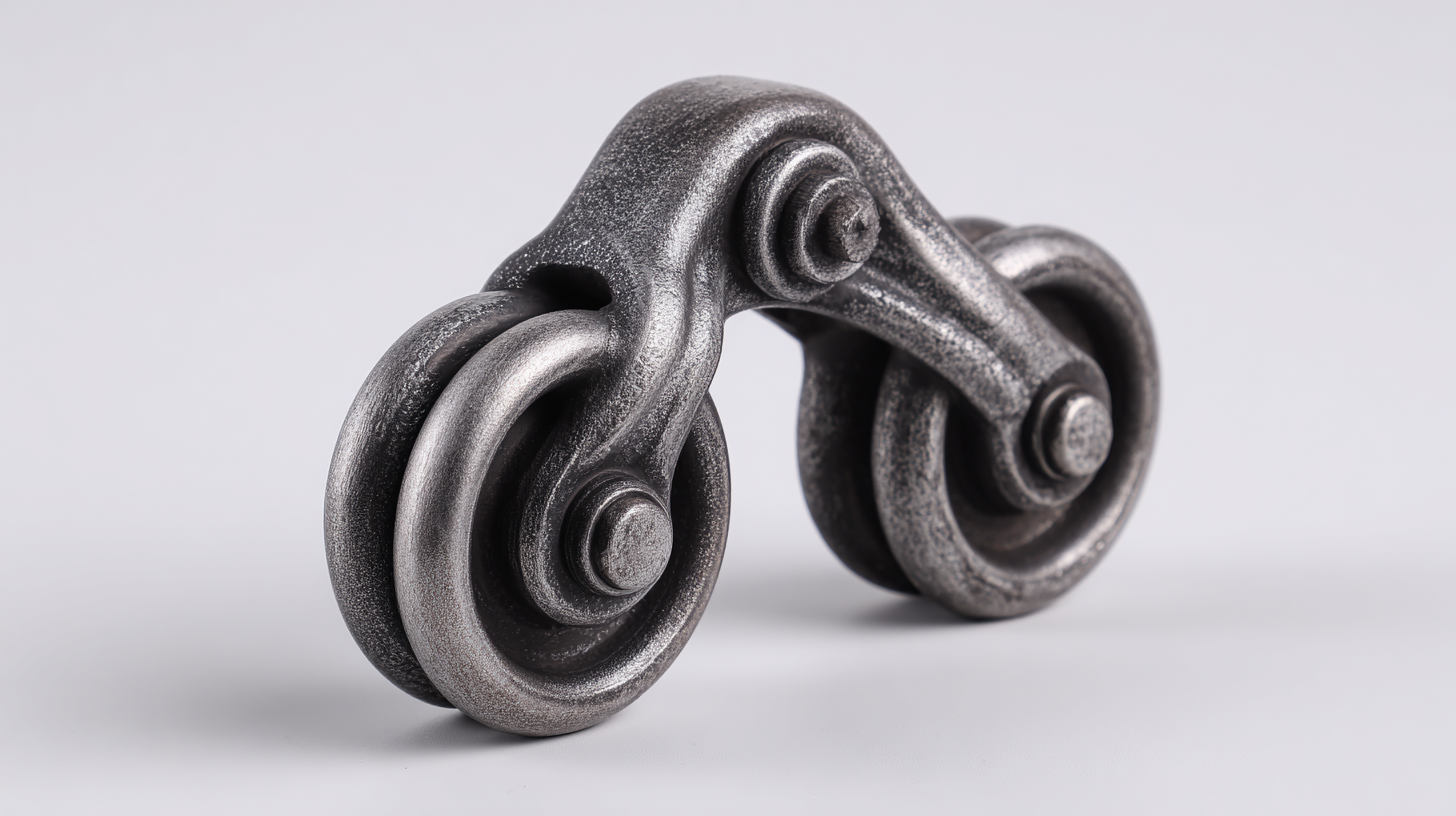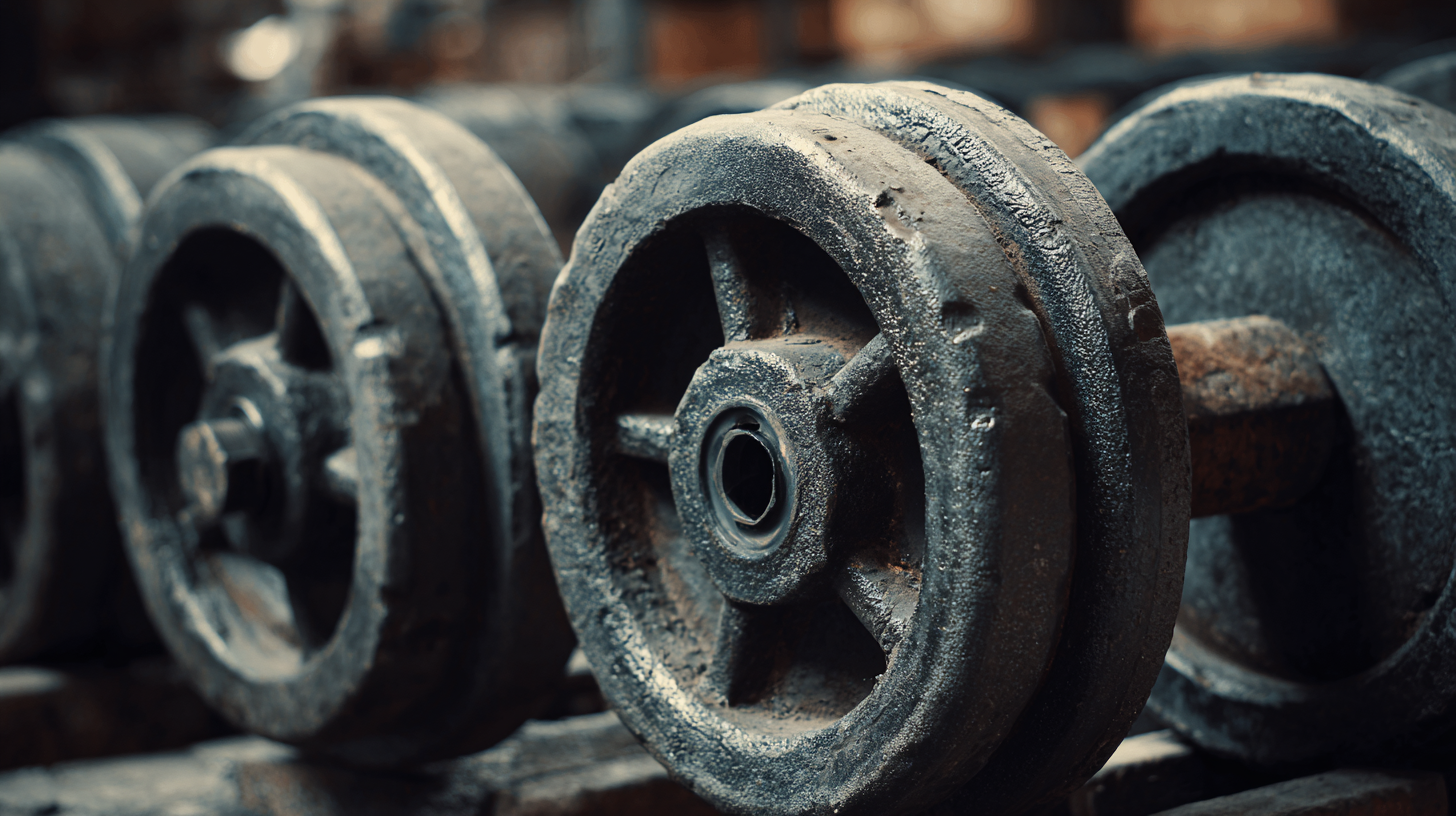
The Future of Cast Iron Casters in Sustainable Manufacturing
In recent years, the manufacturing industry has increasingly shifted towards sustainable practices, and one key component in this transition is the cast iron caster. According to a report by MarketsandMarkets, the global caster market is anticipated to reach $4.2 billion by 2025, with a significant portion of this growth attributed to the demand for sustainable materials and production methods.
 Cast iron casters, known for their durability and strength, present an opportunity for manufacturers to minimize waste and increase efficiency. With the global push for eco-friendly manufacturing solutions, businesses are re-evaluating their supply chains and material choices, making cast iron casters a pivotal element in creating sustainable workflows. This guide will explore the future of cast iron casters, their role in sustainable manufacturing, and how companies can leverage their benefits to meet both regulatory standards and consumer expectations.
Cast iron casters, known for their durability and strength, present an opportunity for manufacturers to minimize waste and increase efficiency. With the global push for eco-friendly manufacturing solutions, businesses are re-evaluating their supply chains and material choices, making cast iron casters a pivotal element in creating sustainable workflows. This guide will explore the future of cast iron casters, their role in sustainable manufacturing, and how companies can leverage their benefits to meet both regulatory standards and consumer expectations.
The Role of Cast Iron Casters in Eco-Friendly Manufacturing Practices
Cast iron casters have long been a staple in manufacturing due to their durability and strength. However, as the industry shifts towards more sustainable practices, the role of these casters is evolving. In eco-friendly manufacturing, cast iron components contribute significantly to reducing waste and enhancing product longevity. Their robustness means they can endure extensive use without the need for frequent replacements, thereby minimizing material waste over time.
Moreover, the manufacturing process for cast iron casters has also adapted to align with sustainability goals. Many producers are now employing recycled materials and green production techniques, which lower the carbon footprint associated with production. This not only supports environmental conservation but also meets the growing consumer demand for responsibly sourced products. By embracing these eco-friendly methods, cast iron casters are not only improving operational efficiency for manufacturers but are also reaffirming their place in a sustainable future.
Innovations in Cast Iron Caster Design for Enhanced Sustainability
The cast iron caster industry is witnessing a transformative shift toward sustainable manufacturing practices. Innovations in design, such as the use of recycled materials, are gaining traction, with studies indicating that replacing virgin materials with recycled iron can reduce energy consumption by up to 75%. This significant reduction not only lowers production costs but also minimizes the carbon footprint associated with caster manufacturing.
Additionally, advancements in manufacturing technologies, such as additive manufacturing and precision casting, are enabling companies to produce lighter and more durable casters. According to a report by the International Journal of Advanced Manufacturing Technology, these innovations can enhance product performance while using less material. Such improvements can lead to an estimated 30% decrease in material waste during the production process, thereby contributing to a more circular economy. As the demand for eco-friendly products grows, the evolution of cast iron caster design will play a crucial role in addressing sustainability challenges within the manufacturing sector.
Market Trends: The Rise of Sustainable Materials in Caster Production
The demand for sustainable materials in caster production is rising significantly as industries pivot towards eco-friendly manufacturing practices. As companies recognize the environmental impact of their products, the integration of sustainable materials like recycled metals and bio-based composites is becoming increasingly common. This shift not only aligns with consumer preferences but also addresses regulatory pressures aimed at reducing carbon footprints.
Cast iron casters, known for their durability, are now being enhanced through the use of sustainable practices, exemplifying how traditional materials are evolving in modern production.
Market trends indicate a robust growth trajectory in the sustainable materials sector, particularly highlighted by the burgeoning construction and automotive industries. For instance, with the global cement market projected to grow from $5009.7 billion in 2024 to $6864.1 billion by 2032, the demand for sustainable casters that support heavy loads and provide longevity is paramount. Additionally, as the automotive wheel rim market anticipates growth from $477.3 billion to $915.3 billion by 2032, manufacturers are increasingly incorporating eco-friendly materials to meet the expectations of environmentally conscious consumers. This trend underscores the urgent need for innovation in caster production, paving the way for a more sustainable manufacturing future.
Lifecycle Assessment of Cast Iron Casters: Environmental Impact and Efficiency
In recent years, the importance of sustainability in manufacturing processes has gained significant attention. The lifecycle assessment of cast iron casters plays a crucial role in understanding their environmental impact and efficiency. By analyzing each stage from raw material extraction to production, use, and disposal, manufacturers can identify opportunities to enhance eco-friendliness while maintaining operational effectiveness.

One pivotal aspect to consider is the durability of cast iron casters. Their lengthy service life translates into reduced waste and lower energy consumption over time. Choosing high-quality materials and employing efficient manufacturing techniques can further minimize the environmental footprint. Manufacturers should aim to design products that are not only robust but also easy to recycle at the end of their lifecycle.
Tip: When selecting cast iron casters, prioritize suppliers who provide detailed lifecycle assessments and demonstrate a commitment to sustainable practices.
Additionally, incorporating energy-efficient processes in the production of cast iron casters can drastically lower greenhouse gas emissions. Techniques like utilizing renewable energy sources and optimizing manufacturing workflows can enhance both efficiency and sustainability.
Tip: Regularly review and update production methods to align with the latest sustainability standards and technological advancements.
Case Studies: Successful Implementations of Sustainable Cast Iron Casters in Industry
The increasing demand for sustainable manufacturing has propelled the advancement of eco-friendly solutions across various industries, including the use of cast iron casters. A case study conducted by the American Foundry Society highlights that manufacturers adopting sustainable cast iron casters have reduced their carbon emissions by approximately 30% compared to traditional options. This is attributed to innovative production methods that optimize energy use and minimize waste, paving the way for greener supply chains.

In another instance, a prominent automotive company implemented sustainable cast iron casters in their assembly lines, resulting in a 25% increase in operational efficiency. According to the 2022 Sustainability Report by the Global Manufacturing Coalition, such implementations not only lower environmental impact but also enhance product longevity—cast iron casters have a lifespan of up to 10 years more than their plastic counterparts. These advancements demonstrate that aligning manufacturing processes with sustainability goals can lead to substantial improvements in both ecological responsibility and economic performance.
